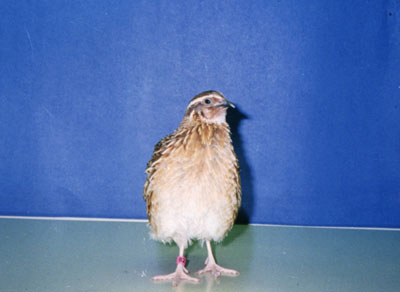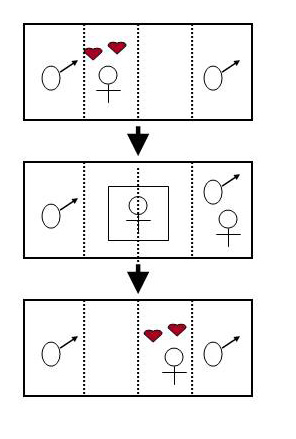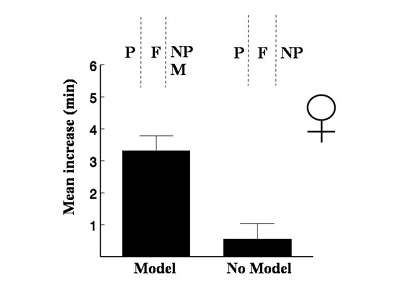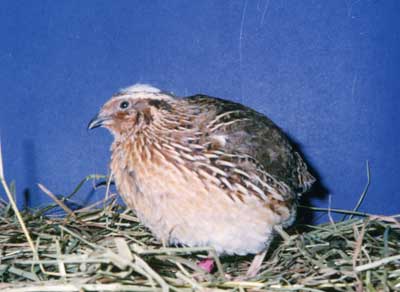Social Influences on mate choice in Japanese quail
(Coturnix japonica)
Classical theories of how animals make mate choices have focused on each sex's inherited preferences for the other sex's traits or behaviors. This work was undertaken to investigate how social factors can play a role in influencing heritable mating preferences.


In a series of experiments, ‘focal' female and male Japanese quail were given the opportunity to observe another quail (a ‘model') of the same sex mating with a conspecific of the opposite sex (a ‘target').
An example of the methods for female choice experiments is provided on the right. In the first 10 min phase of the experiment a focal female quail chooses between two model males. In the second 10 min phase, she observes the male with whom she spent the minority of time in the first phase (her 'non-preferred male') mate with a model female. Then in the third phase the focal female has another 10 min to affiliate with the two males after the model female had been removed.

Results revealed that focal females displayed an increased tendency to affiliate with male targets that they had observed mating with model females, and found a target male more attractive if he had been observed just standing near another female. Observation of the interaction between the male and model female was critical for focal females to change their preferences. Focal females were not going to an area where they had seen more birds. In sum, mate-choice copying and conspecific cueing are viable explanations for female behavior.
Social influences on male mate choice. Differing from focal females, focal males: (1) exhibited a decrease in their preference for female targets that they had observed mating with model males, and (2) showed a decrease in preference for a female target only if she had been seen mating with or being courted by a model male, not simply standing near him. There were also differences in the duration of male and female responses to social information.
These results are consistent with the hypothesis that females gain benefits from attending to the mate choices of other females, whereas for males there is a cost associated with mating with a female that had recently mated with another male.
I then used social information to create a culturally established preference for a novel male morphological trait. The trait consisted of a white feather on the crown of the male:

Then, I allowed focal females to observe other females mating with 'pseudomutant' males and tested focal females' preferences for other pseudomutants. Only in the case where focal females had observed pseudomutants mating with females did focal females prefer pseudomutant males over control males. Thus social information about males seen mating could be used to establish general preferences for other males with similar traits.
To read in more detail about this series of experiments, please visit the publications page of this site.